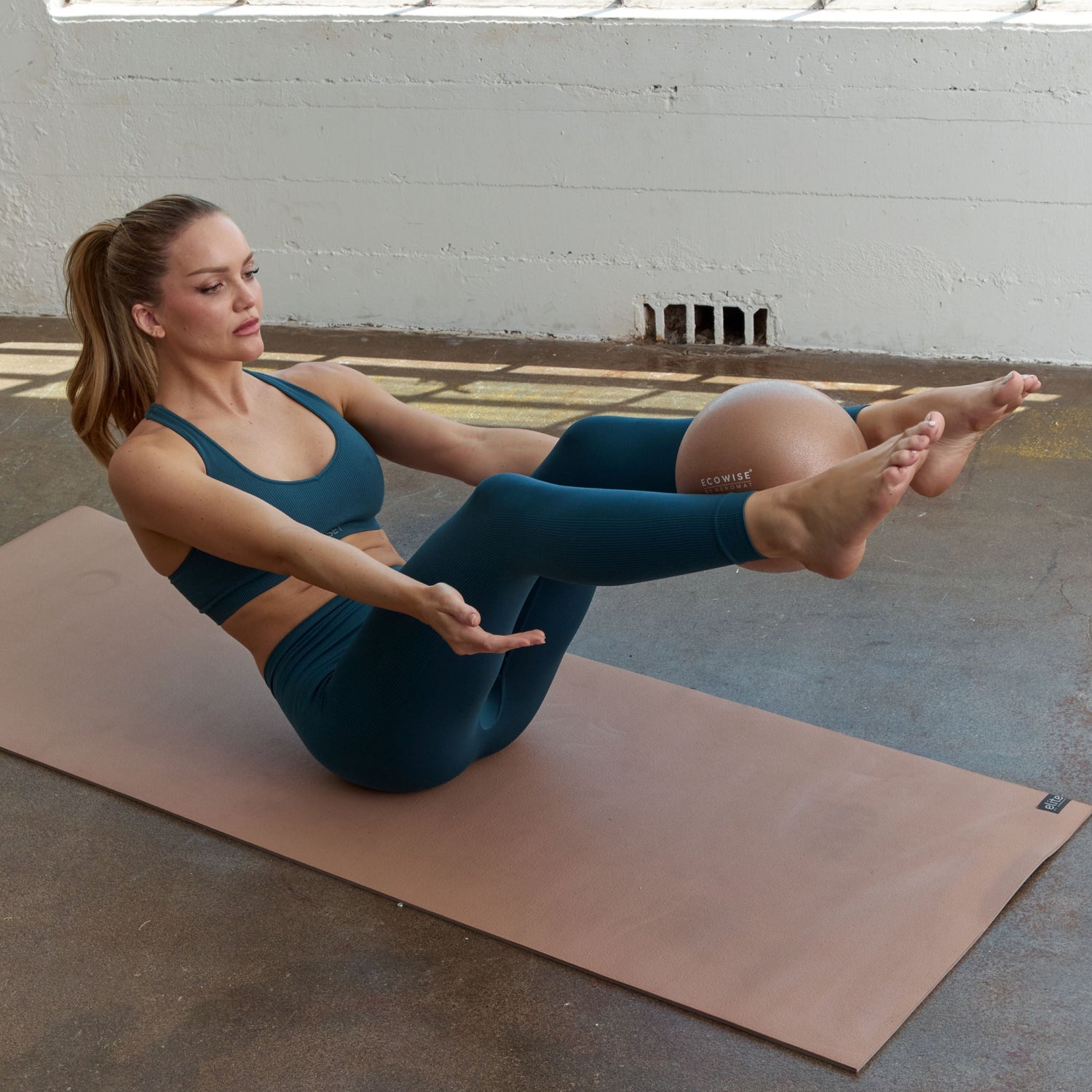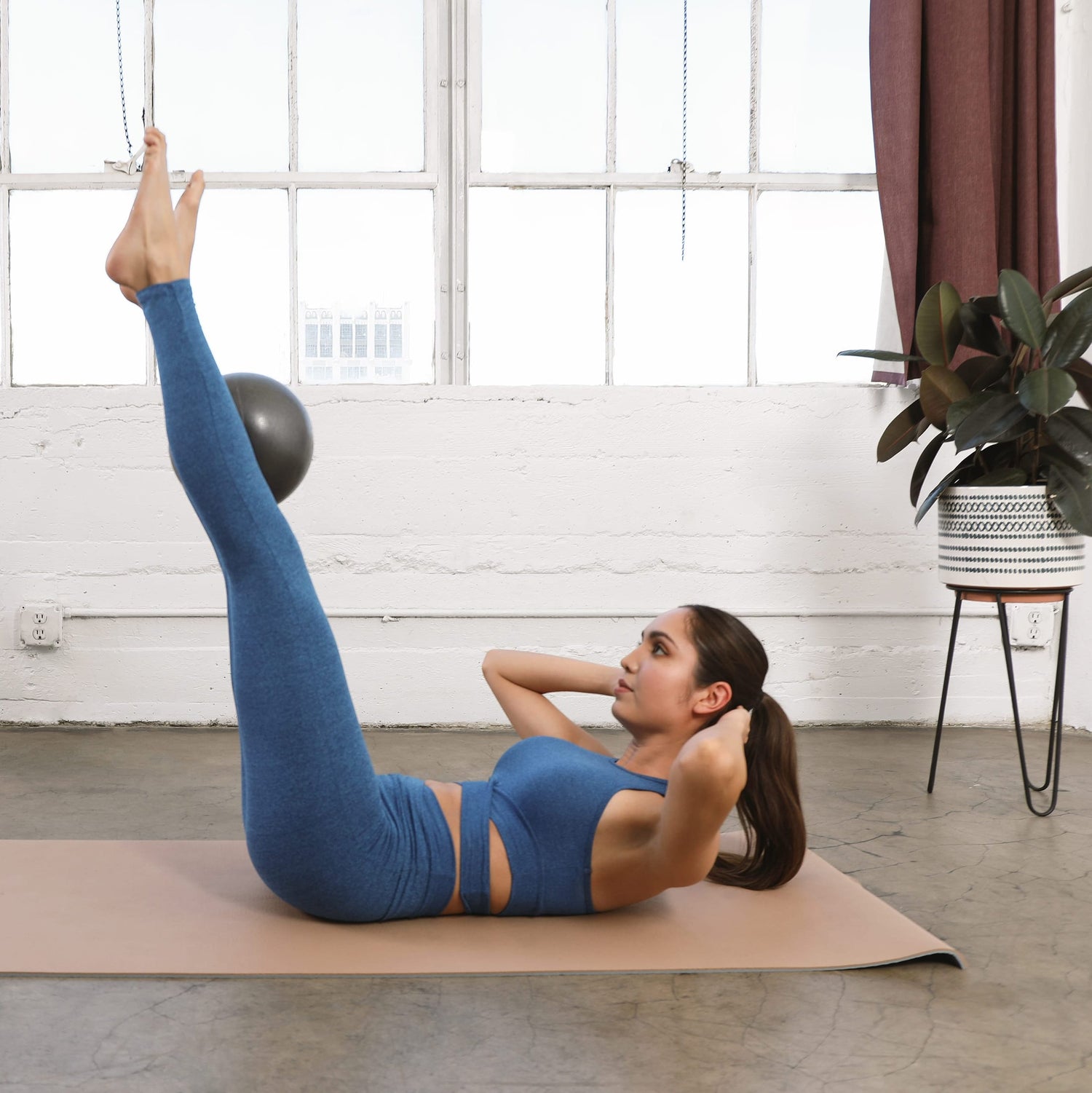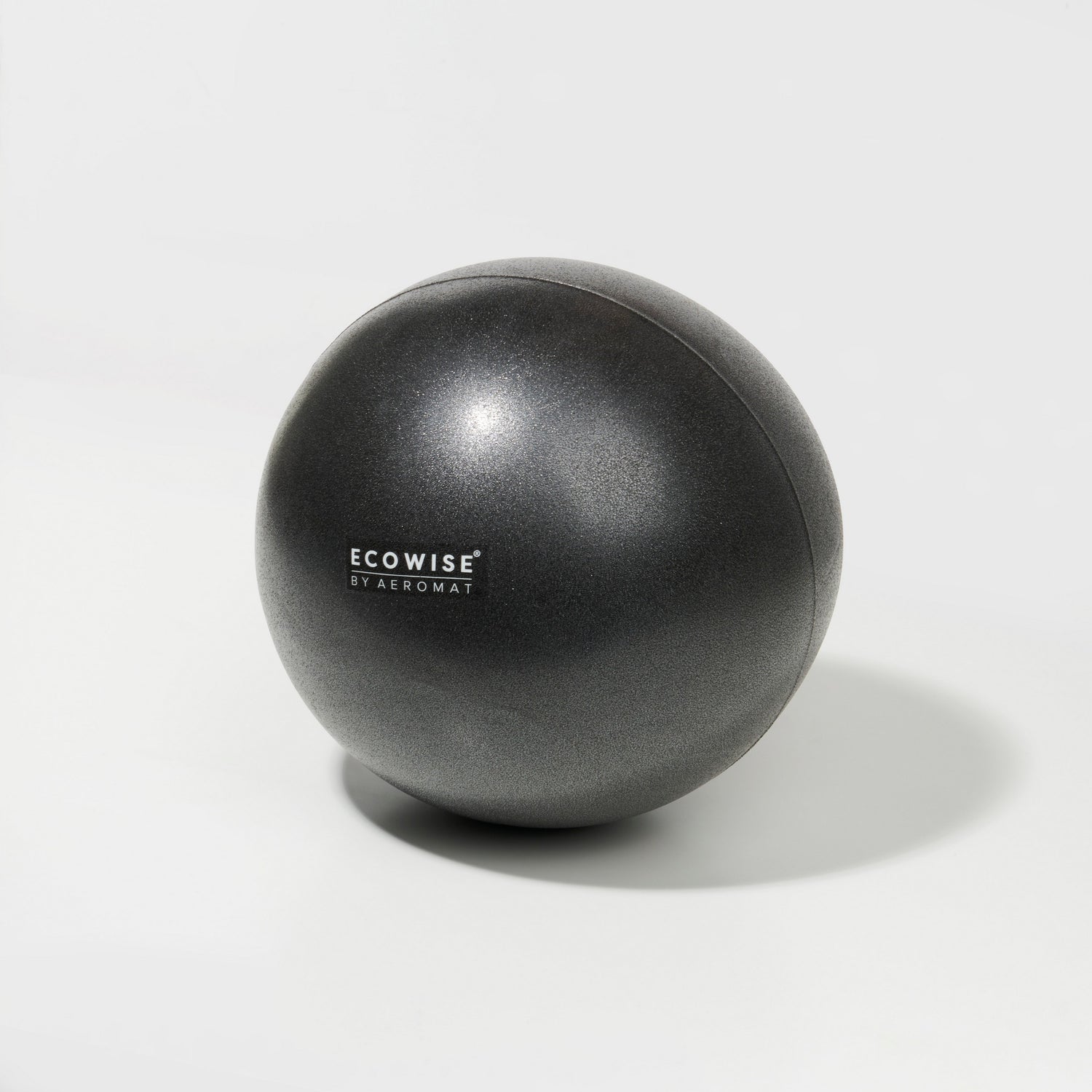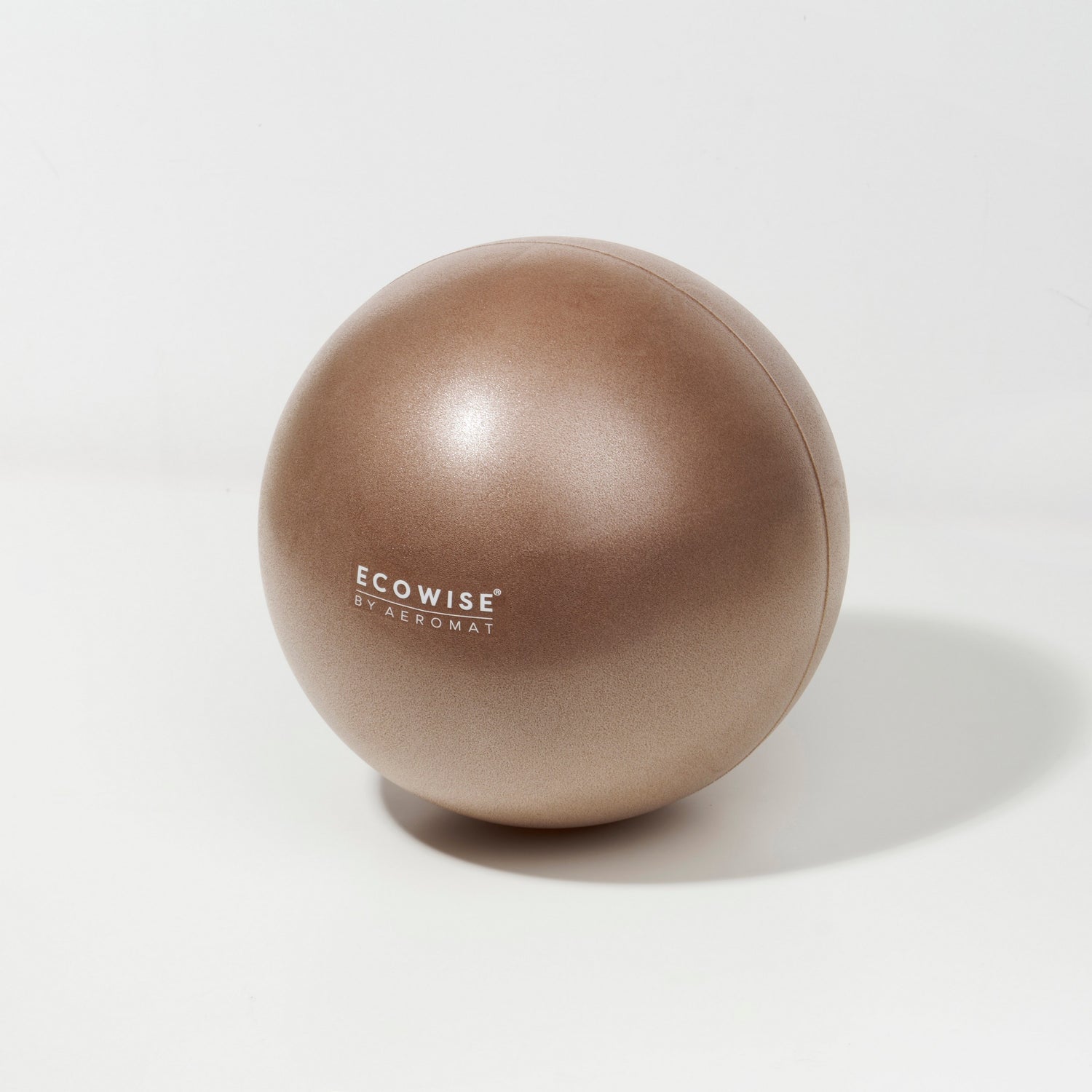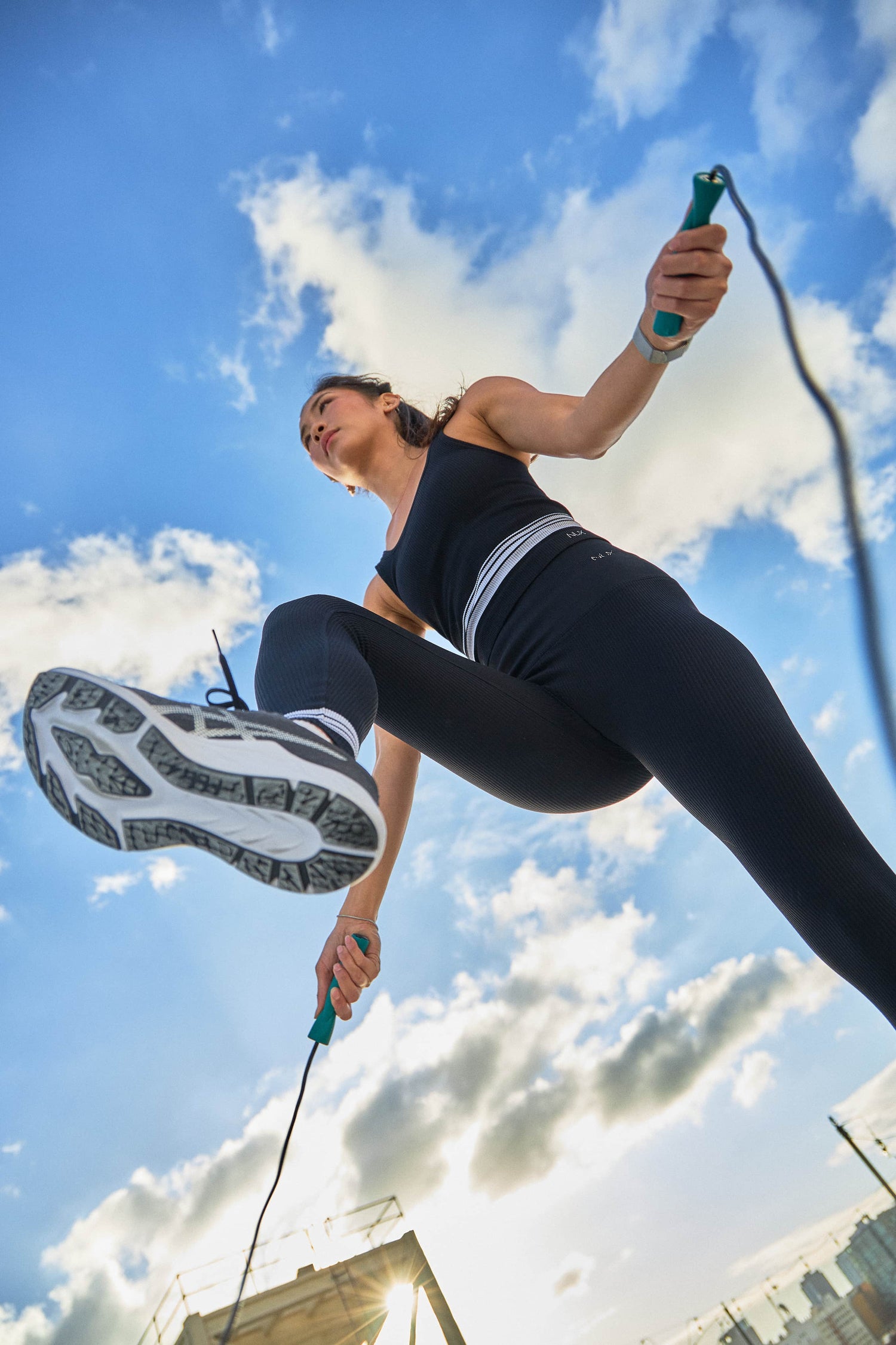Pilates mat exercises are one of the most effective and accessible ways to build strength, improve alignment, and increase flexibility—all from the comfort of your home. Designed to be gentle yet powerful, these movements strengthen your core, improve posture, and support better body awareness. For beginners, Pilates offers a controlled and mindful approach to movement, helping you develop foundational skills that benefit your everyday mobility and long-term wellness.
In this guide, we’ll walk you through how to prepare for your Pilates mat session, introduce the top beginner Pilates mat exercises, and show you how Aeromat enhances your practice. Whether you're new to fitness or transitioning from studio classes to at-home workouts, these exercises will help you start confidently and safely.
Preparing for Your Pilates Mat Workout: Set Up for Success
To make the most of your session, you’ll need minimal equipment—but the right equipment can significantly improve performance, prevent slipping, and support proper form. Creating a calm, clutter-free environment also helps you stay present throughout your movement practice.
Must-Have Pilates Equipment
High-quality equipment plays a central role in making Pilates enjoyable, safe, and effective. Consider using:
• Pilates mats to support your spine and prevent slipping
• Pilates rings (Magic Circles) to increase muscle activation
• Resistance bands to support controlled movement and strength
• Pilates balls to improve balance, core engagement, and alignment
These tools aren’t just accessories—they elevate your practice. A stable mat keeps your spine and joints supported, while rings, bands, and balls provide resistance and feedback, helping you connect more deeply with your muscles. Aeromat’s eco-friendly mats and accessories are specific to deliver comfort and performance for all levels.
Top 5 Beginner Pilates Mat Exercises
Before we explore each exercise in detail, it’s helpful to understand what makes Pilates mat exercises particularly valuable for newcomers. These movements are low-impact, accessible for all ages, and easy to modify, making them one of the best ways to build strength safely.
The following beginner Pilates mat exercises are foundational movements used in studios and home routines worldwide. They introduce essential Pilates principles while helping you feel more connected to your body.
1. The Hundred

The Hundred is a classic Pilates warm-up designed to activate your core, sync your breath, and prepare your body for the rest of the routine.
How to Perform
1. Lie on your back with knees lifted into tabletop.
2. Raise your head, neck, and shoulders while extending your arms alongside your body.
3. Pump your arms up and down while inhaling for 5 counts and exhaling for 5 counts.
4. Continue for 10 cycles to complete 100 pumps.
Beginner modifications: Keep your feet on the mat to reduce intensity. Rest your head on the floor if your neck tires.
Benefits
• Strengthens deep core muscles
• Improves breath coordination
• Warms up the entire body
2. Roll-Up

The Roll-Up helps stretch your spine while strengthening the abdominal muscles that support posture and stability.
How to Perform
1. Lie flat with arms extended overhead.
2. Inhale to raise your arms; exhale to slowly roll your spine off the mat one vertebra at a time.
3. Sit tall, then roll back down with the same slow control.
Beginner modifications: Bend your knees if your hamstrings feel tight. Use a resistance band around your feet for added support.
Benefits
• Increases flexibility
• Improves spinal articulation
• Strengthens the entire core
Aeromat Tip: Incorporate an Aeromat resistance band to guide smooth, controlled movements.
3. Leg Circles

Leg Circles improve pelvic stability, hip mobility, and lower-body control—ideal for those who sit for long hours.
How to Perform
1. Lie on your back with one leg lifted toward the ceiling.
2. Keep your pelvis stable and draw controlled circles with your lifted leg.
3. Reverse directions after 5–8 circles.
Beginner modifications: Bend your opposite leg to relieve lower-back pressure.
Benefits
• Strengthens hip flexors and core
• Enhances pelvic alignment
• Builds control through the lower body
Aeromat Tip: Use an Aeromat Pilates ring between your hands or thighs to maintain proper alignment.
4. Single-Leg Stretch

This exercise teaches core stability and promotes fluid, coordinated movement.
How to Perform
1. Lie on your back, lifting your head and shoulders.
2. Pull one knee toward your chest while extending the other leg long.
3. Switch legs in a smooth, controlled motion.
Beginner modifications: Keep your head resting on the mat if your neck feels strained.
Benefits
• Strengthens core muscles
• Improves coordination and control
• Encourages mind-body connection
Aeromat Tip: Adding an Aeromat Pilates ball can increase resistance for a deeper challenge.
5. Spine Stretch Forward

This calming exercise releases tension through the spine and stretches the hamstrings.
How to Perform
1. Sit tall with legs extended and feet flexed.
2. Inhale deeply; exhale as you reach forward, rounding your spine.
3. Maintain length through the back without collapsing the shoulders.
Beginner modifications: Sit on a cushion to improve hip comfort.
Benefits
• Increases spinal flexibility
• Relieves tension through the upper and lower back
• Improves posture
Tips and Best Practices for Beginners
Transitioning into Pilates is easier when you follow a few key principles. These simple guidelines will help you stay consistent and avoid common pitfalls.
Build Confidence and Progress Safely
• Start slow and stay patient: Pilates rewards consistency, not intensity.
• Focus on technique: Proper form prevents injury and ensures effectiveness.
• Avoid common mistakes: Don’t hold your breath, rush movements, or over-tense your neck.
• Establish a routine: Aim for 2–3 short sessions per week.
• Use the right equipment: Aeromat mats, resistance bands, rings, and balls provide the support and stability you need as a beginner.
Why Choose Aeromat/EcoWise for Your Pilates Practice
Aeromat/EcoWise offers a full range of eco-friendly, durable, and performance-focused Pilates tools designed to support your journey from Day 1.
Our Pilates Essentials Include:
• Non-slip Pilates mats for cushioning and alignment
• Pilates rings for targeted toning
• Resistance bands to support guided movement
• Stability balls for balance and core strength
Each product is crafted with comfort, safety, and sustainability in mind—perfect for elevating your Pilates routine while caring for your body and the planet.
Ready to Strengthen Your Pilates Practice? Start With Aeromat
Starting with simple Pilates mat exercises is an empowering way to build strength, improve posture, and reconnect with your body. With mindful movement and consistent practice, beginners can progress safely and confidently—especially when supported by the right equipment.
At Aeromat, we design eco-friendly, high-performance tools that elevate every stretch, lift, and roll. Whether you’re just beginning or building a long-term routine, our mats, rings, bands, and stability balls are crafted to support your goals with comfort and durability.
Explore our Pilates mats collection today and take the first step toward a stronger, more balanced you.
Frequently Asked Questions
Why do my abs feel sore after Pilates mat exercises?
Soreness is normal because Pilates activates deep abdominal muscles that many people don’t engage regularly. Start with shorter sessions and allow rest between workouts.
How often should beginners do Pilates?
Aim for 2–3 sessions per week. This builds consistency without overwhelming your body, allowing your muscles time to adapt.
Do I need equipment to get started with Pilates?
You can begin with just a mat, but tools like rings, bands, and balls improve alignment, muscle engagement, and overall results—especially for beginners.
How can I avoid neck strain during Pilates?
Keep your gaze forward, engage your core, and support your head on the mat whenever needed. Using a thicker Aeromat mat offers extra neck and spine cushioning.
What should I do if I struggle with flexibility?
Start with modified versions of each exercise and use props like Pilates balls or cushions to support your posture. Flexibility improves with consistent practice.

